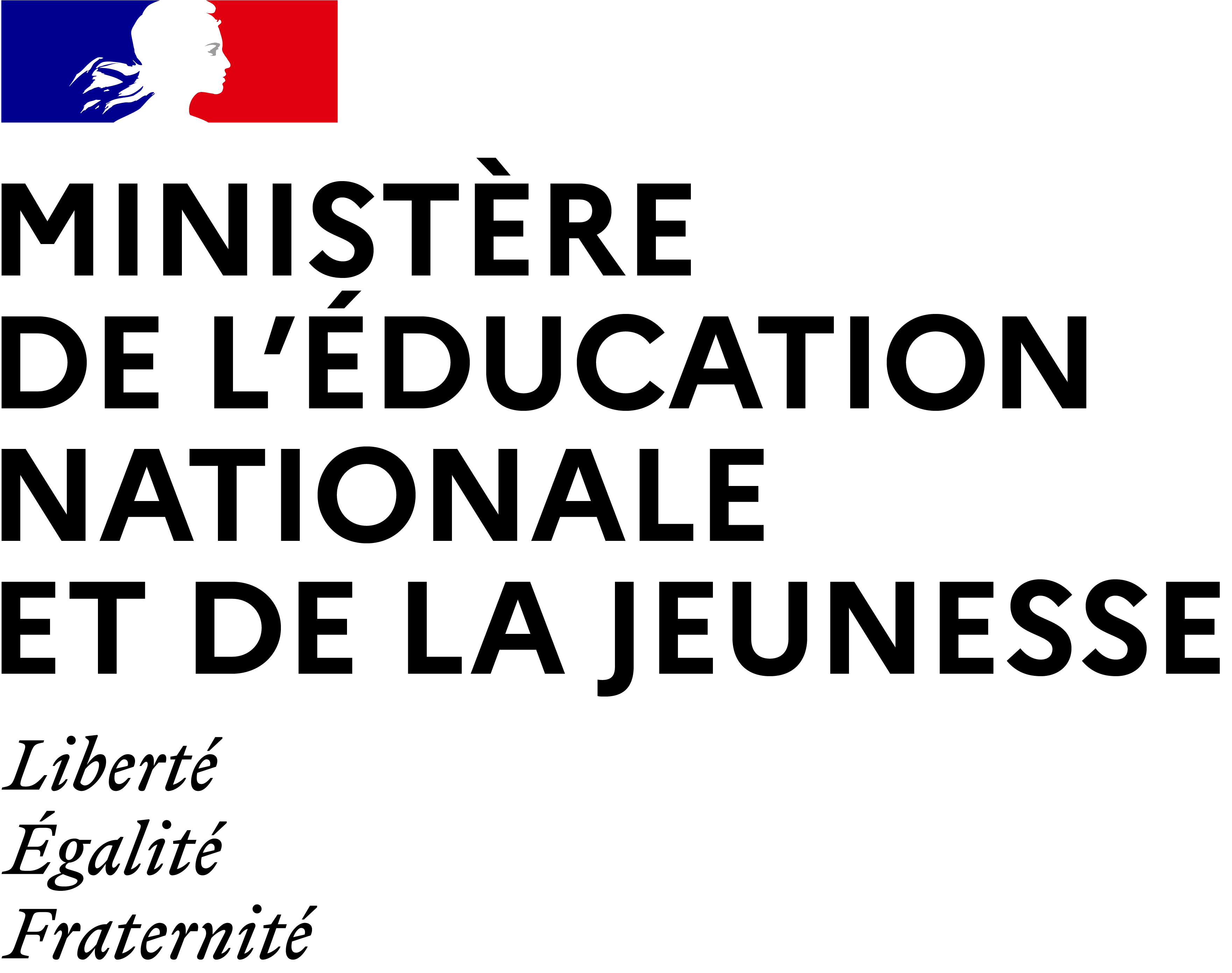

Pass éducation : gratuité des musées et monuments nationaux
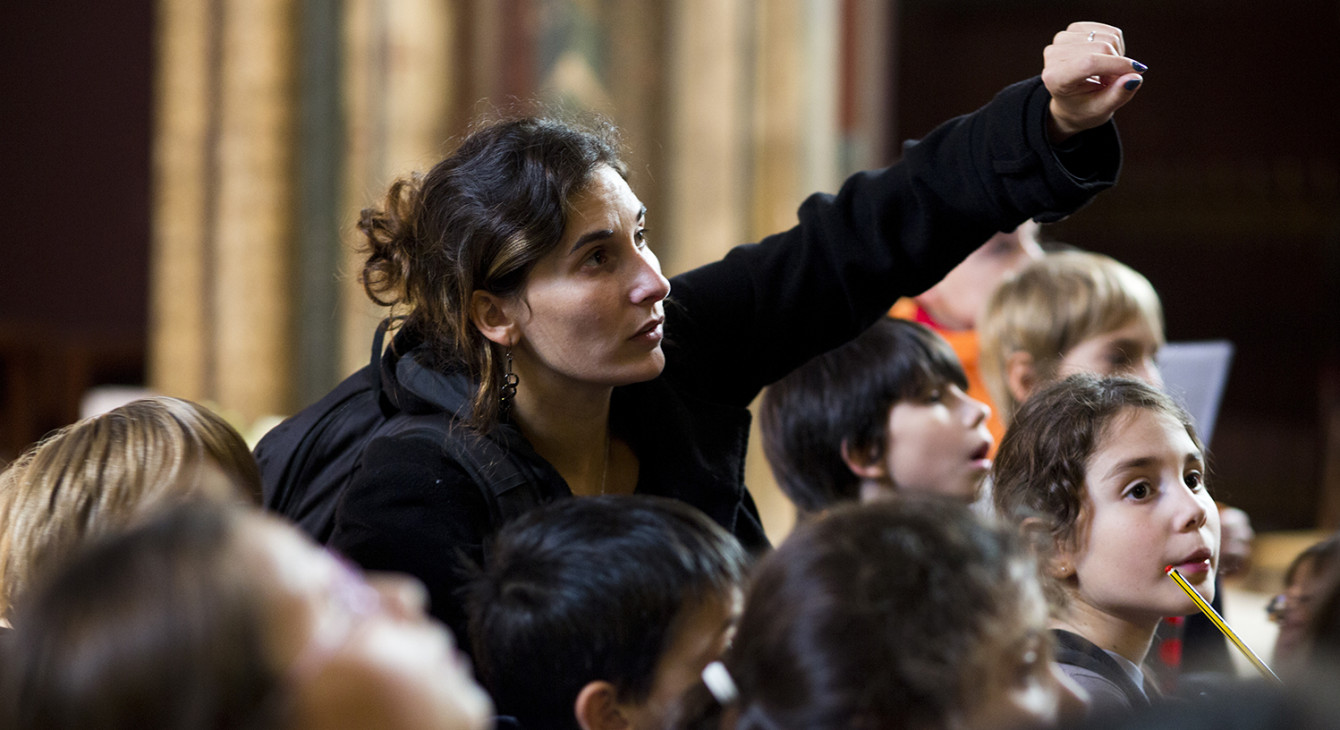
- Art et culture
- Ressources humaines
- Enseignants
Le Pass Éducation est un outil au service du développement de l'éducation artistique et culturelle et plus largement du rapprochement de la culture et de l'École. Il permet un accès gratuit aux collections permanentes de plus de 160 musées et monuments nationaux aux personnels exerçant de manière effective en école, collège et lycée publics.
5’ Temps de lecture 5 minutes
Attention Les seules modalités d'attribution et de distribution du Pass Éducation autorisées par le ministère sont celles décrites ici. Aucune entreprise ni association n'est habilitée à le délivrer sous aucune forme que ce soit. Toute autre forme de Pass Éducation, notamment E-pass, est invalide au regard du ministère de l’Éducation nationale et de la Jeunesse.
Qu'est-ce que le Pass Éducation ?
Le pass éducation en pratique, période concernée.
Le Pass Éducation 2022 est valable pour les années civiles 2022, 2023 et 2024. Il prend effet au 1er janvier 2022.
Public concerné
Tous les personnels ayant bénéficié du Pass Education sur la période 2019-2021 se verront délivrer un nouveau Pass Education.
Le nouveau Pass Éducation 2022 est attribué à tous les personnels rémunérés par l'Éducation nationale - stagiaires, titulaires ou contractuels - exerçant de manière effective en école, collège, lycée publics et privés sous contrat , c’est-à-dire les professeurs, les personnels de direction, d’éducation, les personnels administratifs, sociaux et de santé, les personnels d’orientation, AESH, etc.
Les établissements d'enseignement français à l'étranger homologués relevant de l'AEFE sont également servis dans le cadre de la diffusion faite aux établissements. Pour ces établissements, le Pass Éducation est attribué aux seuls enseignants détachés, titulaires de l’Éducation nationale. Les professeurs recrutés localement ne bénéficient pas de cette mesure.
Distribution du Pass Éducation
La distribution du nouveau Pass Éducation intervient depuis janvier 2022 . Le Pass Éducation est distribué par les directeurs d'école et les chefs d'établissement dans les écoles, collèges et lycées publics et privés sous contrat.

Objectifs pédagogiques et éducatifs
Le Pass Éducation est un outil au service de l' éducation artistique et culturelle , qui s'appuie sur les enseignements, la rencontre directe avec des œuvres et les artistes, l'expérience de pratiques artistiques et l'acquisition de connaissances . Il permet de faciliter la mise en œuvre du parcours éducation artistique et culturelle de l'élève en favorisant la construction de projets éducatifs et pédagogiques au sein de l'école ou de l'établissement afin de :
- Transmettre une culture artistique et patrimoniale à chaque élève
- Favoriser la rencontre avec les œuvres d'art et les artistes
- Encourager la pratique artistique
- Favoriser l'appropriation de connaissances artistiques et culturelles pour chaque élève
À l'école, au collège et au lycée, les élèves doivent avoir la possibilité d'explorer les grands domaines des arts et de la culture dans leurs manifestations patrimoniales et contemporaines, populaires et savantes, nationales et internationales.
Pour ce faire, les équipes éducatives s'appuieront utilement sur le référentiel du parcours d'éducation artistique et culturelle de l'élève (PEAC) annexé à l'arrêté du 1er juillet 2015.
Ce parcours a pour objectifs de :
- Cultiver sa sensibilité, sa curiosité et son plaisir à rencontrer des œuvres
- Échanger avec un artiste, un créateur ou un professionnel de l’art et de la culture
- Appréhender des œuvres et des productions artistiques
- Identifier des lieux et des acteurs culturels de son territoire
- Exprimer une émotion esthétique et un jugement critique
- Utiliser un vocabulaire approprié
- Mobiliser des savoirs et des expériences au service de la compréhension d’une œuvre.
Sur les sites web des rectorats, les délégations académiques à l'éducation artistique et à l'action culturelle (DAAC) fournissent des ressources sur la mise en œuvre du parcours d'éducation artistique et culturelle dans les académies.
Les sites des services départementaux de l'Éducation nationale (DSDEN) proposent également des ressources en termes d'actions éducatives et pédagogiques.
Questions-réponses sur le Pass Éducation
Qui sont les personnels concernés par le pass éducation .
Tous les personnels rémunérés par l’éducation nationale exerçant de manière effective en écoles, collèges ou lycées, publics et privés sous contrat (y compris AEFE).
Enseignant à mi-temps, ai-je droit au Pass Éducation ?
Je suis professeur des écoles stagiaire ai-je droit au pass éducation , les professeurs remplaçants bénéficient-ils du pass éducation , je suis professeur en détachement auprès d'une administration, d'une association ou d'une fondation, puis-je obtenir le pass éducation .
Non, car le Pass est destiné aux personnels rémunérés par l’éducation nationale.
Je suis actuellement mis à disposition d'un établissement public d'une collectivité territoriale, va-t-on m'envoyer un Pass Éducation ?
Actuellement en disponibilité vais-je obtenir le pass éducation , je suis professeur en université, puis-je bénéficier du pass éducation , je suis personnel d'un lycée français à l'étranger relevant de l'aefe, puis-je bénéficier du pass éducation .
Les personnels des lycées français sont employés et rémunérés par le ministère chargé des Affaires étrangères, et non pas par l'Éducation nationale. Certains enseignants de l'AEFE y ont droit sous certaines conditions. Il s'agit des enseignants détachés, titulaires de l'Éducation nationale, à l'exclusion des enseignants en contrat local.
Je suis personnel relevant des collectivités territoriales, au sein d'un établissement scolaire, puis-je bénéficier du Pass Éducation ?
Non, car vous n'êtes pas personnel de l'éducation nationale, mais relevez d'une collectivité territoriale (commune, département, région).
Les personnels qui relèvent de l'enseignement privé ont-ils droit au Pass Education ?
Seuls bénéficient du Pass Education les personnels rémunérés par l’éducation nationale exerçant en établissement privé sous contrat.
Je suis enseignant. Pour avoir mon Pass, dois-je faire une demande au ministère de l'Éducation nationale ou va-t-on me l'envoyer ?
Concernant l'attribution du Pass Éducation, l'interlocuteur des professeurs est le directeur de l'école, le principal ou le proviseur.
Mon chef d’établissement m'a transmis mon Pass Éducation, dois-je le signer ?
Non. L'attribution du pass est certifiée par le tampon de l'établissement.
Je dirige une école primaire et j'ai reçu les Pass Éducation à distribuer à mes collègues. Est-ce bien à moi d'attester de la validité 2022 - 2024 en mettant le tampon de l'école dans la case correspondante ?
Oui. Le tampon doit être apposé sur la case de gauche pour la période en cours uniquement (2022-2024).
Notre établissement a reçu un nombre de Pass insuffisant. Comment faire pour obtenir des Pass supplémentaires ?
Les directeurs d’école transmettent leurs éventuels besoins auprès de l’IEN de circonscription.
Les IEN de circonscription, les chefs d’établissement formulent leurs demandes de réassort en ligne sur la plateforme dédiée.
Votre école ou établissement a reçu une quantité de Pass Éducation finalement supérieure aux besoins réels. Qu’en faire ?
Certains destinataires ont reçu des commandes avec un volume de pass supérieur aux besoins réels. Nous vous invitons à retourner les pass en surplus au ministère de l’éducation nationale et de la jeunesse, bureau SAAM D2 – 110 rue de Grenelle 75537 Paris SP07.
Liste des musées et monuments nationaux en académie
Seules les académies de France métropolitaine et de Corse proposent des musées et monuments nationaux accessibles gratuitement aux détenteurs d'un Pass Éducation.
Académie d'Aix-Marseille
- Abbaye de Montmajour
- Château d'If
- Hôtel de Sade à Saint-Rémy-de-Provence
- Musée des civilisations d'Europe et de la Méditerranée
- Place forte de Mont-Dauphin
- Site archéologique de Glanum
Académie d'Amiens
- Château de Coucy
- Château de Pierrefonds
- Musée franco-américain du château de Blérancourt
- Musée de la voiture et du tourisme à Compiègne
- Musée du château de Compiègne
- Tours de la cathédrale Notre-Dame d'Amiens
Académie de Besançon
- Cathédrale de Besançon et son horloge astronomique
Académie de Bordeaux
- Abbaye de La Sauve-Majeure
- Château de Cadillac
- Château de Puyguilhem
- Grotte de Pair-non-Pair
- Musée national de préhistoire des Eyzies-de-Tayac
- Musée du château de Pau
- Site archéologique de Montcaret
- Grotte des Combarelles
- Abri de Laugerie-Haute
- Abri de Cap-Blanc
- Grotte de Font-de-Gaume
- Site archéologique de Montcaret Gisement de La Ferrassie
- Gisement de La Micoque
- Abri du Poisson
- Grotte de Teyjat
- Tour Pey-Berland à Bordeaux
Académie de Caen
- Abbaye du Mont-Saint-Michel
- Château de Carrouges
Académie de Clermont-Ferrand
- Château d'Aulteribe
- Château de Chareil-Cintrat
- Château de Villeneuve-Lembron
- Cloître de la cathédrale du Puy-en-Velay
Académie de Corse
- Musée de la Maison de Bonaparte
Académie de Créteil
- Archives nationales – Site de Pierrefitte-sur-Seine
- Basilique-cathédrale de Saint-Denis
- Château de Champs-sur-Marne
- Château de Vincennes
- Musée du château de Fontainebleau
- Musée de l'Air et de l'Espace
- Musée Fragonard
- Domaine national de Jossigny
- Musée de la gendarmerie (Melun)
Académie de Dijon
- Abbaye de Cluny
- Château de Bussy-Rabutin
- Musée Magnin
Académie de Grenoble
Il n'y a pas de musée ou de monument national acceptant le Pass Education dans cette académie
Académie de Lille
- Musée du Louvre-Lens
- Colonne de la Grande-Armée
- Villa Carvois
Académie de Limoges
- Musée national Adrien Dubouché - Limoges Cité de la céramique - Sèvres & Limoges
Académie de Lyon
- Château de Voltaire à Ferney
- Monastère de Brou à Bourg-en-Bresse
Académie de Montpellier
- Château et remparts de la cité de Carcassonne
- Fort Saint-André à Villeneuve-lès-Avignon
- Forteresse de Salses
- Site et musée archéologique d'Ensérune
- Tours et remparts d'Aigues-Mortes
Académie de Nancy-Metz
- Centre Pompidou-Metz
Académie de Nantes
- Château d'Angers
- Maison de Georges Clemenceau à Saint-Vincent-sur-Jard
- Musée national des deux victoires Clemenceau - de Lattre
Académie de Nice
- Abbaye du Thoronet
- Cloître de la cathédrale de Fréjus
- Fort de Brégançon
- Monastère de Saorge
- Musée de l'Artillerie
- Musée national Marc Chagall
- Musée Picasso La Guerre et la Paix
- Musée Fernand-Léger
- Musée national de la Marine
- Musée des troupes de la Marine
- Musée national du Sport
- Trophée d'Auguste à La Turbie
- Villa Kérylos
Académie d'Orléans-Tours
- Château national d'Azay-le-Rideau
- Domaine national de Chambord
- Château de Bouges
- Château de Châteaudun
- Château de Fougères-sur-Bièvre
- Château de Talcy
- Cloître de la Psalette
- Domaine de George Sand à Nohant
- Palais Jacques Cœur à Bourges
- Tour et crypte de la cathédrale de Bourges
- Tours et Trésors de la cathédrale de Chartres
Académie de Paris
- Arc de Triomphe
- Centre national d'Art et de Culture Georges Pompidou
- Chapelle expiatoire
- Conciergerie
- Établissement public du Palais de la Porte dorée
- Hôtel de Béthune-Sully
- Hôtel de la Marine
- Domaine national du Palais-Royal
- Cité de l'architecture et du patrimoine Palais de Chaillot
- Musées des Arts Décoratifs
- Musée d'art et d'histoire du Judaïsme
- Musée de l'Assistance publique, Hôpitaux de Paris
- Musée du Louvre
- Musée de l'Orangerie
- Musée national du Moyen-Âge - Thermes et Hôtel de Cluny
- Musée des Arts asiatiques-Guimet
- Musée d'Orsay
- Musée Rodin
- Musée Picasso
- Musée Jean-Jacques Henner
- Musée d'Ennery
- Musée Hébert
- Musée Gustave-Moreau
- Musée Eugène-Delacroix
- Musée du quai Branly
- Musée des archives nationales – Hôtel de Soubise
- Musée de la musique - Philharmonie de Paris
- Musée des arts et métiers - Cnam
- Musée de l'Armée
- Musée de la Poste
- Musée national de la Légion d'honneur et des ordres de la Chevalerie
- Musée des plans reliefs
- Sainte-Chapelle
- Tours de la cathédrale Notre-Dame
Académie de Poitiers
- Abbaye Saint-Sauveur-de-Charroux
- Château d'Oiron
- Musée napoléonien et Musée africain de l'Île-d'Aix
- Site gallo-romain de Sanxay
- Tours de la Rochelle
Académie de Reims
- Château de La-Motte-Tilly
- Cathédrale de Reims
- Palais du Tau à Reims
Académie de Rennes
- Cairn de Barnenez
- Maison d'Ernest Renan à Tréguier
- Site des Mégalithes de Locmariaquer
Académie de Rouen
- Abbaye du Bec-Hellouin
- Musée national de l'Éducation
Académie de Strasbourg
Il n'y a pas de musée ou de monument national dans cette académie
Académie de Toulouse
- Abbaye de Beaulieu-en-Rouergue
- Château d'Assier
- Château de Castelnau-Bretenoux
- Château de Gramont
- Château de Montal
- Site archéologique de Montmaurin
Académie de Versailles
- Château de Rambouillet, Chaumière aux Coquillages et Laiterie de la Reine
- Château de Maisons
- Domaine national de Saint-Cloud
- Maison des Jardies à Sèvres
- Cité de la Céramique - Sèvres
- Musée du château de Malmaison
- Château, musée et domaine national de Versailles
- Musée du château de Bois-Préau
- Musée de Port-Royal-des-Champs
- Musée d'archéologie nationale - château de Saint-Germain-en-Laye
- Musée de la Renaissance - château d'Ecouen
- Villa Savoye à Poissy
Libre accès pour les jeunes de moins de 26 ans
Les jeunes européens de moins de 26 ans bénéficient d'un accès gratuit aux collections permanentes des musées et aux monuments nationaux.
Plus d'infos sur : www.culture.gouv.fr
Sites à consulter
Le parcours d'éducation artistique et culturelle.
- Qu'est-ce que le PEAC ?
- Une construction commune et en partenariat
- Le référentiel , cadre commun de la mise en œuvre du parcours d'éducation artistique et culturelle de l'élève
- Outils pour la mise en œuvre du parcours
Le parcours d'éducation artistique et culturelle sur eduscol
Le portail histoire des arts
4 000 œuvres d'art en ligne, classées selon le programme d'enseignement d'histoire des arts. Niveaux : École primaire, Collège, Lycée. www.histoiredesarts.culture.fr
Centre des Monuments Nationaux ( CMN )
Le Centre des Monuments Nationaux ( CMN ) propose une grande diversité d'activités qui mêlent des approches thématiques croisées, élaborées en cohérence avec l'ensemble des programmes scolaires. Le Centre des Monuments Nationaux
La classe, l'œuvre !
Écoles, établissements scolaires et musées se rapprochent autour des œuvres qui sont présentées sur le site, accompagnées d'une notice scientifique et historique. Les élèves s'en inspirent et proposent une interprétation libre et spontanée.
"La classe, l'oeuvre !" sur le site de la Nuit européenne des musées "La classe, l'œuvre !" sur le site Eduscol
Les écoles et les établissements d'enseignement français à l'étranger
Consulter la liste des écoles et établissements d'enseignement français à l'étranger homologués sur eduscol
Textes de référence
Convention entre la RMN, le MENESR et le MCC Convention du 26 mai 2014
Finalités éducatives et pédagogiques du pass éducation Circulaire n° 2016-011 du 3 février 2016
Finalités éducatives et pédagogiques du pass éducation : modification circulaire n°2017-015 du 30 janvier 2017
Mise à jour : septembre 2023
Les articles suivants peuvent aussi vous intéresser
L'éducation artistique et culturelle.
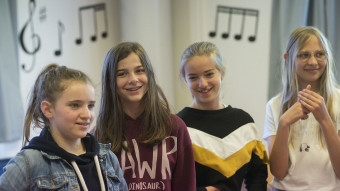
- Programmes (scolaires)
L'éducation artistique et culturelle est indispensable à la démocratisation culturelle et à l'égalité des chances. Le parcours d’éducation artistique et culturelle accompli par chaque élève se construit de l’école primaire au lycée, dans la complémentarité des temps scolaire et périscolaire d’une part, des enseignements et des actions éducatives d’autre part. Il conjugue l’ensemble des connaissances et des compétences que l’élève a acquises, des pratiques qu’il a expérimentées et des rencontres qu’il a faites dans les domaines des arts et de la culture.
En savoir plus
Les contenus suivants peuvent aussi vous intéresser
La rémunération des enseignants.
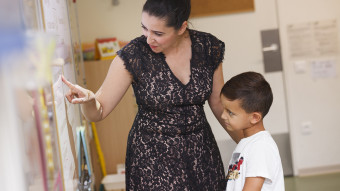
Le salaire d'un enseignant évolue progressivement au cours de sa carrière, à mesure que l'enseignant avance dans les échelons de sa grille. Le traitement de base d’un enseignant est défini selon son corps d’appartenance et son grade. Il s'y ajoute diverses indemnités, dont certaines sont communes à tous les enseignants et d’autres sont perçues dans le cadre d’activités ou de fonctions particulières.
Revalorisation des rémunérations et amélioration des perspectives de carrière des équipes éducatives
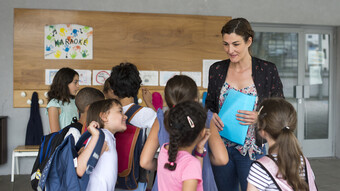
Grâce à une hausse historique du budget du ministère de l’Éducation nationale et de la Jeunesse, des mesures sont mises en place dès la rentrée scolaire 2023 pour améliorer les conditions d'exercice du métier, renforcer durablement son attractivité et reconnaître l’engagement des professeurs au service des élèves.
Augmentation de la rémunération nette mensuelle des professeurs et conseillers principaux d'éducation à la rentrée 2023 : quels effets ?
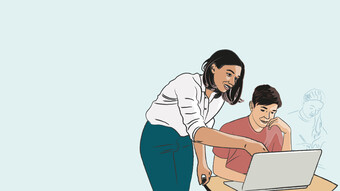
Découvrez les effets de l'augmentation de la rémunération à la rentrée scolaire 2023 selon les profils-types de professeurs et conseillers principaux d'éducation exerçant à temps plein dans l'enseignement public.

OFFICIAL SITE • SINCE 1988
15,000,000 visitors can't be wrong, to see it all, you have to have it.
The PARIS MUSEUM PASS opens the doors to more than 50 museums and monuments in Paris and the Paris region.
The more you visit, the more you save.
So, set off to discover one of the most fabulous heritages in the world!
• 3 formulas: 2 days , 4 days , 6 days
• Free access * to monuments and museum collections
• Allows 1 entry to each site
• Duration of use calculated per hour
To use it, nothing could be simpler: Present your pass (paper format or e-ticket) at the checkpoints of each site. The duration of use begins from the time of the first visit.

2 days — 48 hours
I.e. €31.00 / day **, savings - on average - from the 4th visit , i.e. €19.25 / day **, 4 days — 96 hours.
* Best Seller *

Savings - on average - from the 5th visit !
I.e. €15.33 / day **, 6 days — 144 hours, savings - on average - from the 6th visit .
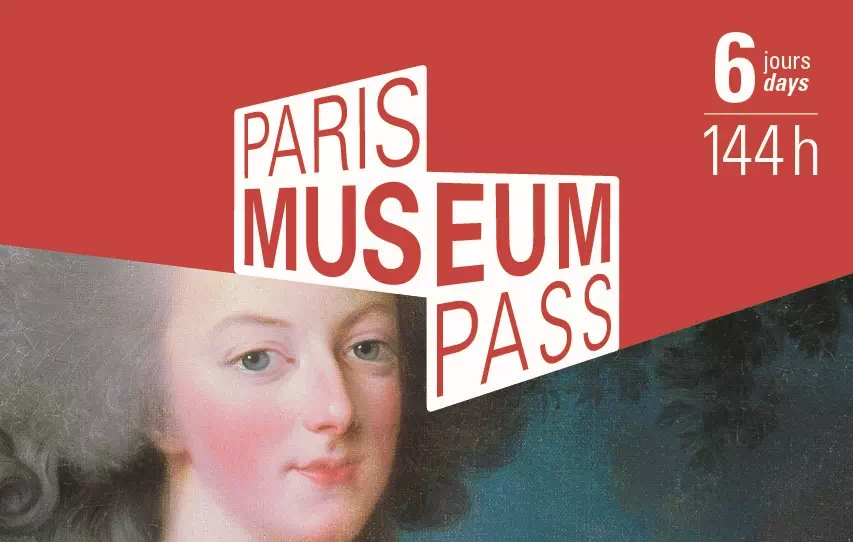
* Free entry is not guaranteed when there are special access conditions ( reservation required , security check or number of visitors regulated and limited for security reasons) .
** Service fees are applied in certain sales networks.
The pass is neither refunded nor exchanged , and does not include access to temporary exhibitions.
Reserving a time slot is mandatory in some sites. To find out more, see the RESERVATION page .
Museums and monuments are mostly free for visitors under 18 and for European Union nationals under 26.
For more information, see the TERMS OF SALE .
ADMISSION PRICE SITES WITHOUT THE PASS
Entrance prices of the main museums and monuments are included between €13 and €22
MUSÉE DU LOUVRE
CHÂTEAU DE VERSAILLES ET DE TRIANON
HÔTEL DE LA MARINE
MUSÉE D'ORSAY
MUSÉE PICASSO • PARIS
ARC DE TRIOMPHE
MUSÉE DE L'ARMÉE • TOMBEAU DE NAPOLÉON
MUSÉE RODIN • PARIS
CENTRE POMPIDOU • MUSÉE NATIONAL D'ART MODERNE
SAINTE-CHAPELLE
Our website uses javascript in order to function correctly. Please enable javascript from your browsers settings menu in order to get the greatest experience.

Eiffel Tower 2nd Floor Access by Elevator – Guided Tour in English
Visit the unique und famous landmark of the city of paris with the paris city pass. save 52,00 €.

Skip the ticket booth and head directly up to the second floor of the famous Eiffel Tower on this guided tour. Learn about the history and the secrets behind the construction of this iconic French landmark and admire the spectacular views over Paris. Experience the magic of this unique monument and enjoy panoramic views of the French Capital with direct access to the Eiffel Tower. Meet your guide near the Eiffel Tower to hear stories from the past and present of this famous monument. The guide will then lead you past the ticket line to ascend by elevator to the 2nd floor. From the 2nd floor, you'll be able to marvel at panoramic views of the French capital, and find landmarks such as the Louvre, Grand Palais, the bends in the Seine, Montmartre, Invalides, Notre-Dame, etc. Then take the time to go to the 1st level to walk on the glass floor.
Times Eiffel Tower Tour
After your booking you'll get a link and detailed instructions on how to book your time slot for the visit.
There is allocated time slots for the guided visits to the Eiffel tower that you will be able to chose from depending on the day of your visit (subject to availability).
Eiffel Tower tours are only available 75 days in advance. If you’re organizing a visit to Paris more than three months in advance, please note that timeslots will be open when tickets are available. You can book your guided tour within the 75 days prior to you desired visit date.
Price Eiffel Tower Tour
Upgrade you city pass with this guided Eiffel Tower tour and enjoy more savings (upgrade available for 40€)
Ticket Eiffel Tower Tour
Please note: booking The Eiffel Tower Guided Tour is necessary. After you make your Turbopass booking, we’ll provide you with a link and detailed instructions on how to book your time slot for the visit. This attraction is extremely popular and gets booked up fast. If this is one of your 'must-do' activities, please reserve your spot as soon as possible!
Meeting Point Eiffel Tower Tour
Meeting point: Meet your guide at the PARIS TRIP office: 41 Avenue de la Bourdonnais 75007, situated a few hundred meters away from the Eiffel Tower. The meeting point IS NOT at the Eiffel Tower.

Click here to see on google maps
Directions Eiffel Tower Tour
RER : C (Pont de l'Alma stop) 6 minutes walk Métro : 8 (ECOLE MILITAIRE), 9 (ALMA-MARCEAU) 10 minutes walk Bus : 42 (Rapp - la Bourdonnais 2 min walk) 69 (Rapp - la Bourdonnais 2 min walk) 82 (Tour Eiffel 7 min walk), 92 (Bosquet - Saint-Dominique 5 min walk)
Special terms and conditions Eiffel Tower Tour
• Even with direct access, you may have to wait in lines for security and the elevators • In peak season, depending on the crowd at the Eiffel Tower the entrance can take more time • Latecomers will not be granted access to the tower and will be considered a no-show and a refund is not possible • The viewing platforms on the Eiffel Tower are often very cold and windy during the winter season.
Highlights Eiffel Tower Tour
- Avoid waiting in the ticket-line with a reserved entry to the 2nd floor of the Eiffel Tower
- Perfect introduction for first-time visitors
- Led by a local guide
- Learn about the history of the Eiffel Tower
- Enjoy breath-taking views and see iconic sites like the Louvre and Sacre Coeur from above.
Attractions near Eiffel Tower
Close to the Eiffel Tower you can find the Musée du Quai Branly which houses an exhibition about Non-European art with more than 300.000 objects. In front of the Eiffel Tower you can relax on the large green space, called Champ de Mars . It is a great space to enjoy the sun and to take a break during sightseeing. Another highlight of the park is the wall of peace which was constructed in 2000 by the military school. When you cross the bridge over the river Seine, you can also visit the Musée National des Arts Asiatique – Guimet . The museum has the largest collection of Asiatic art outside of Asia and additionally offers a Japanese Garden to find a place to rest in the metropolis Paris. Another highlight that is located closely to the Eiffel Tower is the Musée Rodin which completely focuses on the works of the French sculptor. The museum is surrounded by a park with sculptures and enables you to experience art in the open air. By using the Paris City Pass you can visit all three museums and many more for free.

History of the Eiffel Tower
The landmark of Paris, the famous Eiffel Tower, was constructed in 1889 by Gustave Eiffel due to the world exhibition. At that time the short construction phase was an unbelievable achievement in architecture and engineering and was seen as miracle. At first it was planned to demolish the Tower 20 years after construction. Fortunately its function regarding radio and television broadcast became too important and led to the monument’s preservation. Until the Chrysler building in New York City was finished in 1930, the Eiffel Tower was considered as the highest building of the world. Since its opening more than 250 million people visited the Eiffel Tower and it still attracts more than 7 million visitors every year. This makes the Eiffel Tower one of the most visited buildings of the world. As soon as the sun sets, 20,000 bulbs change the Eiffel Tower into a shining artwork.
Construction of the Eiffel Tower
The Eiffel Tower consists of three floors which can be entered. The first floor is located 57 meters above the ground and can be reached by lift or by foot. After a long phase of renovation the platform has a floor made of glass. By looking down you can observe everything that happens underneath the platform. Furthermore there are digital albums, screens and replication which illustrate information and the history of the Eiffel Tower in an interesting and funny way. There are also spaces to relax, shops and restaurants. The second floor offers a great view over Paris and is also reachable by stairs. Souvenir shops, the restaurant of the starred chef Jules Verne as well as the amazing view create a visit to the Eiffel Tower you will never forget. On top of the Eiffel Tower you can find the highest platform 276 meters above the ground. This floor can only be reached by lift and provides you with a breathtaking view. Panoramic maps about your location and about cities and the distances can be found there. It is highly recommended to visit the Eiffel Tower after the sun sets. The illuminated monument offers you a unique panorama which you will never experience like this again.
Visit the incomparable Eiffel Tower with Paris City Pass for free by using the Paris City Pass.
Paris City Pass
Free admission to Paris's museums, attractions, and tours. Discounts included.
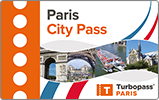
incl. VAT and service fees, excl. shipping fees
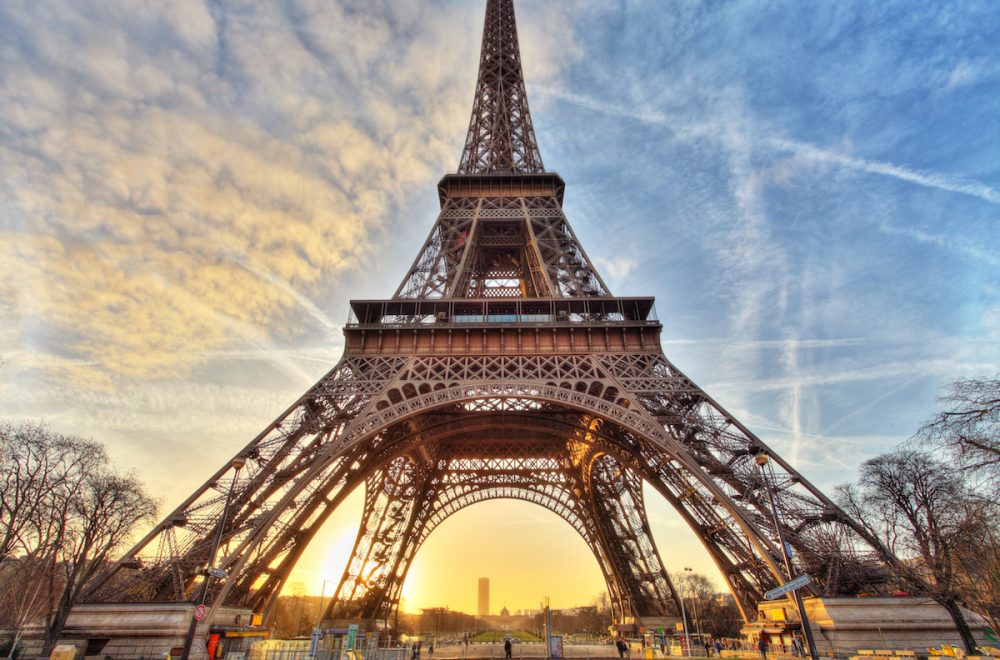
Eiffel Tower Guided Climb
The symbol of paris as it was meant to be experienced.
- When Check availability
- Duration 2 hours
- Meeting Point Allée des Refuzniks
€38 per adult
Local experts, worry-free booking.
Check Availability
- Meeting Point
- Travel Tips
- Experience the Eiffel Tower from within by climbing it alongside your expert guide.
- Get a bird's eye view of the Louvre, Notre Dame, Sacré-Cœur, Les Invalides, and more.
- Learn about the tower's engineering and the daredevil stunts that made history.
- Receive your ticket from your guide so you can head in together and save time.
- Upgrade to reach the summit, featuring views, a champagne bar, and Gustave Eiffel’s private office.
- Relax on a boat cruise on the beautiful Seine river with an optional upgrade.
- Take our chartered Paris shuttle for convenient transportation, included with your tour.
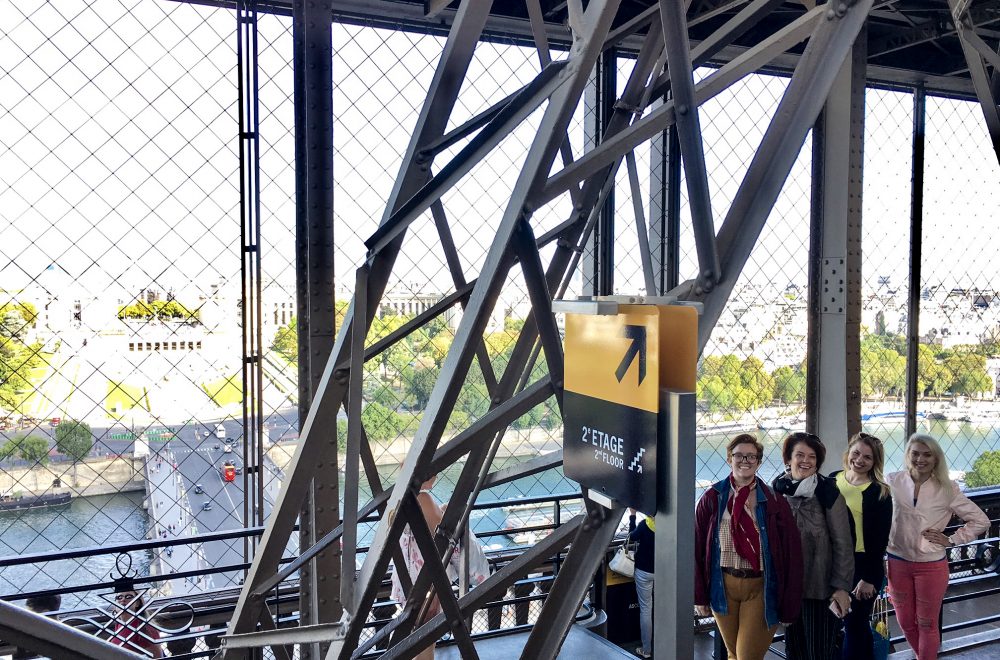
What you'll do
Climb the Eiffel Tower as its creator, Gustave Eiffel, intended. He thought it was the best way to see the tower, and we agree — that’s why we created the world’s first Eiffel Tower Guided Climb. On this immersive tour, your local guide will take you inside the tower and share about its engineering, design, history, and brief notoriety.
Take a break from climbing on the first floor and admire the views, including through the transparent floor below you. There are exhibits here, too, like a piece of the tower’s spiral staircase almost lost to history .
Next, climb to the second level for a stunning panorama of Paris: the Louvre, Notre Dame, Sacré-Cœur in Montmartre, the Grand Palais, the Seine river, and beyond. Your guide can give you recommendations on where to eat on this floor (the macaron bar is popular), and you can also shop for authentic Eiffel Tower souvenirs.
Your guided portion ends here, but if you’ve already selected and paid for the summit upgrade, you’ll continue via glass-walled elevator to the summit . At the summit, peek inside Gustave’s restored private office, with wax figures of Claire, his daughter, and Thomas Edison. Other exhibits show historic maps and even a model of the reddish-brown 1889 summit. Enjoy the views from the indoor and outdoor observation decks, and finish it all off with a drink at the champagne bar.
Per Eiffel Tower rules, if you upgrade your tour to see the summit, you should head to the summit as soon as you reach the second floor. After you visit the top of the tower, feel free to explore the first and second floors on your way down. The first level of the Eiffel Tower has more exhibits, a glass floor, and occasional pop-ups.
If you’ve opted for the Seine river cruise upgrade, you will also receive a ticket for a one-hour boat cruise. This is a physical ticket that will be handed to you when you check in for your Eiffel Tower tour with our tour coordinators. You can head straight to the boat landing to take your cruise after your climb or go on another day. You’ll have up to a year to use your Seine river cruise ticket.
First level of the Eiffel Tower
Featuring a transparent floor so you can admire the forecourt below
Second level of the Eiffel Tower
Spectacular views of the city plus dining options
Optional upgrade: Eiffel Tower summit
The highest level of the tower at 905 feet above ground
Optional upgrade: Seine river boat cruise
A scenic cruise down the Seine, lined with some of the most famous sights in Paris
Make this tour private
Book this tour for just your group, starting from €250.
Plan your trip
Summit upgrade.
The top floor of the tower is subject to last-minute closures by Eiffel Tower staff. If it closes, we’ll refund the summit upgrade portion of your ticket and ensure you still have an incredible Eiffel Tower visit.
Seine cruise upgrade
Take a one-hour cruise along the Seine, including an on-board guide. Your ticket is good for up to one year from your tour date. (Last boat departure is at 6:30pm)
Tour ending point
The guided portion of your tour ends on the second level of the Eiffel Tower.
Refund policy
We offer a 100% refund up to 24 hours prior to the tour start time.
Prefer not to climb? Take our Eiffel Tower Elevator Tour.
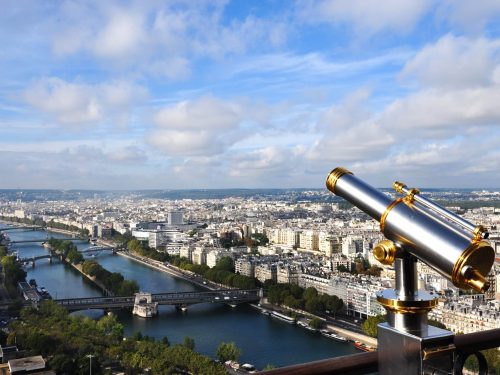
We had an amazing time climbing the Eiffel Tower. Kamila, our tour guide, was knowledgeable, fun and entertaining. While it says its 700 plus steps, it's not as hard as you think it's going to be and well worth the pain!!! You climb at your own speed and rest in between levels. The views from the top are SPECTACULAR!!!
Meeting point
Meet the ground team from ExperienceFoundry outside the Eiffel Tower and don’t pass through any security checks. You will find them outside the South Security Entrance (Entrance #1) of the Eiffel Tower on Allée des Refuzniks, near the trees and the benches. The Allée des Refuzniks is a dirt footpath just outside the Eiffel Tower.
The ground team representatives from ExperienceFoundry will be wearing orange hats and holding orange signs that say ExperienceFirst or ExperienceFoundry.
For easier navigation, you can paste these coordinates into Google Maps: 48.857358,2.293079
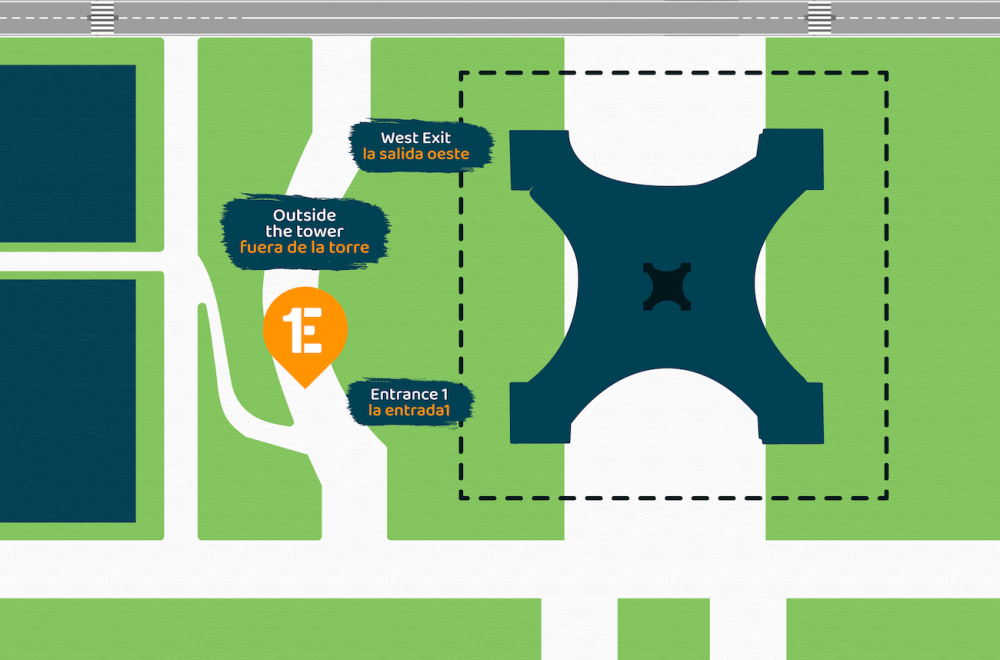
When should I get there?
Plan to be there 30 minutes early. The tour starts promptly, and you may not be able to catch up if you arrive late.
What happens if the summit closes?
If you’ve booked the summit upgrade but the summit is closed when you receive your tickets from your tour guide, the summit portion of your tour will be refunded, and you’ll still enjoy a guided climb to the second floor. Please note that it’s not possible to cancel your reservation due to summit closure. The summit may be closed by Eiffel Tower staff for maintenance, weather, safety, and more, and this is unfortunately beyond our control.
How does the Seine cruise upgrade work?
Your guide will give you instructions on where to find the boat. Your ticket is good for a one-hour cruise along the Seine anytime within one year of the date of your tour. Make sure to arrive on time for your Eiffel Tower tour to receive your boat tickets — if you miss your tour, you won’t be able to pick up your cruise tickets.
How much climbing is there?
It’s about 700 steps to reach the second level. We climb at a comfortable, moderate pace, and there’s a break halfway through on the first floor. If mobility is a concern, we recommend our Eiffel Tower Tour by Elevator .
Will we have to wait in line?
This tour doesn’t include skipping the line. Your guide will purchase tickets for you after you arrive. Please be aware that the wait time to purchase tickets can be up to two hours. However, rest assured that your guide will keep you entertained and provide insightful information about the Eiffel Tower while you wait in line together.
Are there lockers available before we go up?
No. We recommend leaving luggage at your hotel since Eiffel Tower staff reserves the right to refuse entry to those with extra bags. Foldable strollers also aren’t allowed on the climb.
Is there food and drink available during the tour?
Yes, you can purchase food and drink on the first and second levels, and there are restrooms here as well. Your guide will have recommendations on where to eat.
What if it rains?
Our tours run rain or shine. Please check the local forecast and plan accordingly. In rare instances when we have to cancel for extreme weather, we’ll offer you the chance to reschedule or a refund.
What is the rescheduling policy?
We understand plans change. We offer a 100% refund or the option to reschedule up to 24 hours prior to your tour start time. Within 24 hours of your tour, we would have incurred hard costs and therefore cannot allow rescheduling or cancellation without costs.
Are gratuities included?
Tips are always appreciated but never expected. They’re a great way to tell your guide they did an awesome job and show your appreciation.
Realice este recorrido en español
Machen sie diese tour auf deutsch, paris travel guides.
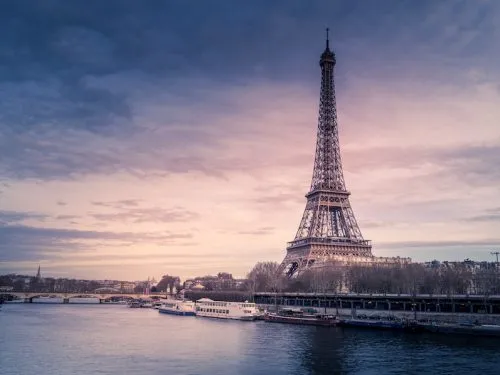
Experience the Eiffel Tower With Climbing, Dining, and Views
Many say that the Eiffel Tower offers the best views in Paris — and who could really argue? But there is so much…

9 Things To Make You Fall Hopelessly in Love With Paris
There’s a reason Paris is known as the City of Love. Everything — from its charming streets to ornate architecture, the café culture…
More in Paris Previous Next
Notre dame outdoor walking tour with crypt entry.
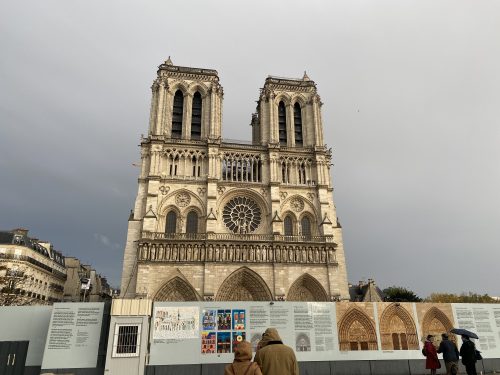
Montmartre Walking Tour
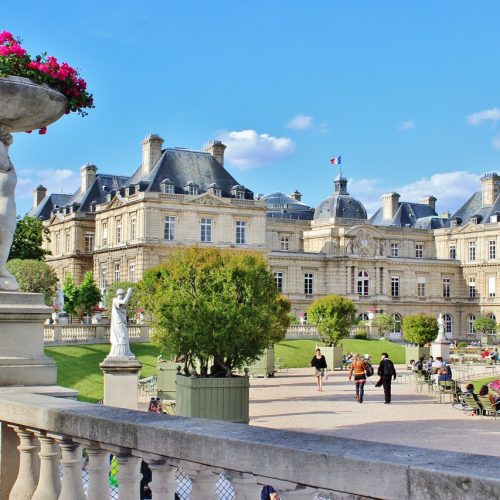
Latin Quarter Walking Tour
- The Eiffel Tower

The Eiffel Tower will be open during the Olympic Games except on July 26. Exceptionally, tickets for visits from June 17 will go on sale later than usual (instead of 60 days before the day of the visit). No tickets for this summer (including during the Olympic Games) are currently on sale, so do not buy tickets from websites promoting such offers. Keep an eye on our official online ticket office.
- Contact information
Your tickets are on the way !
We sent you the tickets by mail.
If you cannot find them in your inbox, please check your spam inbox.
If you don’t remember the email address registered with your order, we invite you to contact our Customer Service by phone +33(0)9 69 36 27 07 (price of a local phonecall within continental France) or by email at [email protected]
Online help
How much does it cost to visit the eiffel tower.
To check the prices for the Eiffel Tower, please visit this page on the official Eiffel Tower site . The Eiffel Tower online ticket office provides the official prices. The adult price applies to adults 25 years and over. There are discount rates for young people (12-24 years old), children (4-11 years old) and for those with disabilities. Admission is free for children under 4 years old. The price of the ticket varies upon how you go up (elevator and/or stairs) and the destination (2nd floor or the upper floor) you select.
The desired visit date is not available, what should I do?
Certain days (weekends, days during peak season between July and August) are in high demand and we sell out quickly, especially for e-tickets for the top floor, which are the most popular. If you are flexible, select another date that is shown as available. The dates marked in orange indicate that the last tickets are available. Lined out or grayed out dates are no longer available. If there is no more online availability, note that tickets to visit the Eiffel Tower are also sold on site at the ticket offices at the monument. Regardless, we sell our tickets online up to 60 days in advance (for lift tickets) and 14 days in advance (for stairs tickets to second floor). If you can, plan your visit well in advance, so you will have the choice of date, destination and time.
How many tickets can I buy?
On the online ticket shop, you can buy up to 9 tickets for the same order. Groups who want to buy tickets, regardless of the number, must use the ticket office site reserved for groups.
We are sorry, the tickets for are not yet available online.
These tickets will be available from
Your cart will expire
Your order from the Eiffel Tower’s official box office is still valid for : 5 minutes.
If you wish to proceed with your order, you still have 5 minutes remaining to validate your purchase. Without any activity in the next minute, your cart will be emptied.
Your cart has expired
Only latin characters are accepted.
You are being redirected on the Lyra platform to safely finalize your payment
9 Things to See in Moscow's Red Square
Sir Francis Canker/Getty Images
In most cases, you'll be entering Red Square from the north, passing landmarks such as the Bolshoi Theatre and Duma parliament building as you make your way southward. Although you don't necessarily have to pass through the Voskresensky (or Resurrection in English) Gates in order to gain access to the square these days, they definitely provide a sense of arrival, to say nothing of the way their left arch frame's St. Basil's Cathedral if you look from just the right angle.
An interesting fact is that while a gate of some kind has stood here since the mid-16th century, the one you currently see wasn't built until 1994, having been destroyed in 1931 so that tanks could enter and exit Red Square during military parades.
St. Basil's Cathedral
TripSavvy / Christopher Larson
Few sights are as iconic not only of Moscow and Red Square but indeed of Russia than St. Basil's Cathedral, whose colorful, onion-shaped domes are a symbol of the country around the world. Officially known as the Cathedral of Vasily the Blessed, this church has stood since 1561, which is quite miraculous when you consider all the turbulent history that has transpired since then.
Among other things, religion was severely prohibited during the Soviet period , which led some to believe that this emblem of the Russian Orthodox church might not withstand the tenure of the USSR.
An interesting fact is that St. Basil's is the so-called "Kilometer Zero" of Russia; all of Moscow's main roads (which can take you anywhere in Russia) begin at the exits to Red Square. In this way, St. Basil's iconic status also has an extremely tangible element.
The Kremlin
TripSavvy / Christopher Larson
When you think of The Kremlin, it's unlikely that positive images enter your mind. The fact that simply saying the word "Kremlin" is too vague a descriptor (most Russian cities have their own Kremlin complexes; you should say "Moscow Kremlin") notwithstanding, this misunderstood place is incredibly beautiful, even if you don't like the policy that comes out of it.
Senate Square
In spite of its name, which refers to the role the building that rises above the square played during Imperial Russia, Senate Square is actually home to Russia's presidential administration, currently helmed by Vladimir Putin. In order to see where Russia's legislature operates from, walk just outside Red Square to the Duma parliament building.
Dormition Cathedral
Dating back to the year 1479, the gold-domed Dormition Cathedral pays homage to an Orthodox religious feast that commemorates the death of the Virgin Mary . As is the case with St. Basil's, it is curious that such a conspicuously religious structure was able to survive through the Soviet period.
Armoury Chamber
Though it takes its name from the fact that it housed Russia's royal arsenal when it was built in the 16th century, the most notable resident of the Kremlin's Armoury Chamber today is the Russian Diamond Fund.
Notable Kremlin Towers
Robert Schrader
The interior of the Moscow Kremlin is more beautiful and inviting than you'd expect, but the walls and towers that rise around it better live up to the intimidation with which the complex is associated.
Borovitskaya Tower
Named to commemorate the dense forest that once stood atop the mount where it's built, this tower is extremely picturesque. Built in the late 15th century, it's visible from most places in the square, and also as you walk along the Moskva River.
Nikolskaya Tower
Also built in the year 1491, this tower currently suffered destruction at the hands of Napoleon's army in the 19th century. What you see now is the result of an 1816 re-design and renovation, though artillery fire during the Russian Revolution also caused superficial damage to the tower, named to honor St. Nikolas of Mozhaysk , so it's difficult to know which elements of it are original.
Spasskaya Tower
Known in English as the "Savior's Tower," this iconic, star-topped tower is perhaps the best-known of all the Kremlin's towers. Built in 1491 like the other two towers on this list, it's certainly the most photographed. As a result of its proximity to St. Basil's, it often makes its way into tourists' pictures.
Mausoleum of Lenin
Just as it's strange to learn how many religious monuments survived through the Soviet period, it's a bit odd to think that Lenin's preserved body still sits in a mausoleum just beneath the walls of the Kremlin on Red Square, given the lack of consensus about the ultimate impact of his Revolution, even in Russia.
It's not guaranteed that you'll be able to see the body (which, believe it or not, seems to be improving with age ) when you go, and if you do you will likely have to wait in line, but even strolling past the outside of the Lenin Mausoleum, flanked by stone-faced guards that almost look like statues, illuminates the gravity of his body still being here.
GUM Shopping Center
You might cringe, at least initially, when you realize that one of the most iconic stops on a tour of Red Square is a department store—until you see said department store, that is. Built in 1893 and known during Soviet times as the State Department Store, GUM ( Glávnyj Universáľnyj Magazín or Main Universal Store in English) hearkens back to the grandeur of the late 19th century, both seen from the outside (especially, when lit up at night) and the interior, which might have you feeling like you're further west in Europe.
A trip inside GUM is a particularly good idea during winter, when frigid temperatures outside will have you savoring the heat, the quality of souvenirs, confections and other goods sold inside notwithstanding. Also, make sure not to confuse GUM with CDM, which sits near the Bolshoi Theatre, even though both are stunning and iconic in their own right.
State Historical Museum
The Russian State Historical Museum is located near Voskresensky Gates, though you should wait until after you've seen the first few attractions of Red Square and the Kremlin to head back there and go inside. To be sure, as you pass by its facade (whose late-19th century grandeur somewhat obscures that fact that it's currently a museum accessible to the public) you might not even think to try and gain entry.
Once inside the museum, you can plan to spend at least a couple of hours, given that artifacts here date back to the very beginning of the Russian state in the ninth century. As is the case with GUM, this will be a particularly alluring prospect if you visit in winter, when Moscow is arguably at its most beautiful, but certainly at its least tolerable.
Minin-Pozharsky Monument
It's somewhat easy to disregard this monument, which pays homage to the two Russian princes who ended the so-called "Time of Troubles" in the mid-16th century, during which Polish-Lithuanian forces occupied Russia, among other awful things including a famine. That's because the statue currently sits just at the base of St. Basil's Cathedral, which makes it very difficult to photograph or even see without being overwhelmed by that much more famous edifice.
Though the statue originally sat at the very center of Red Square, it came to be an obstacle to the movement of tanks during the Soviet period, much like the Voskresensky Gates. As a result, authorities moved it during that time, and it's stayed where you currently find it ever since.
Kazan Cathedral
Taken by itself, the smokey-pink Kazan Cathedral is an architectural marvel; originally built in the 17th century, the church you find here today, located just north of the GUM department store, dates back only to 1993.
Unfortunately, since it sits not only in the shadow of GUM, but also in the shadow St. Basil's and the Towers of the Kremlin, it's easy to miss entirely if you aren't looking. As a result, you might wait until you've seen just about everything else in Red Square before coming here to take photos, and to appreciate the understated beauty of this oft-overlooked cathedral.
Moskva River
As you head south from St. Basil's Cathedral to exit Red Square, make sure to walk onto Bolshoy Moskvoretskiy Bridge, which crosses the Moskva River. If you look due north, you can get an excellent shot of the church framed, on the left, by the towers of the Kremlin. Directing your gaze a bit to the west allows you to see the skyscrapers of Moscow City as they rise above the Kremlin's walls.
Walking westward along the riverbank is also a worthwhile excursion, for the views it provides of Red Square and the Kremlin, as well as the fact that doing so takes you to other iconic Moscow attractions, including Gorky Park and the Pushkin Museum. The views you enjoy from the river and the bridge are particularly stunning at night, though you should make sure you bring a tripod if you want to get a clear picture, given how strong winds over and near the river can be.
Moscow - Russian Rivers and Waterways Port of Call
Moscow Metro: The Complete Guide
25 Best Things to Do in Moscow
The Impressive Castles of Eastern Europe
St. Basil’s Cathedral in Moscow: Planning Your Visit
St. Petersburg, Russia
10 Must-Visit Palaces and Castles in Russia
Top 12 Things to Do in Kazan, Russia
The Top 12 Things to Do in Nizhny Novgorod, Russia
The Top 12 Things to Do in Astrakhan
Soviet Sights in Moscow – Moscow USSR Sites
The Top 12 Things to Do in Novgorod, Russia
The Top 15 Places to Visit in Russia
A Guide to the 4th Arrondissement in Paris
The Top 15 Things to Do in Bordeaux, France
A Guide to Moscow: Capital of Russia, City of Domes
Origins and Construction of the Eiffel Tower
It was for the 1889 Exposition Universelle , the date that marked the 100th anniversary of the French Revolution, that a great competition was launched in 1886.
The first digging work started on the 26th January 1887 . On the 31st March 1889, the Tower had been finished in record time – 2 years, 2 months and 5 days – and was established as a veritable technical feat .
- Une première version bien différente
- La construction
- Durée de construction record
- Le journaliste Émile Goudeau visitant le chantier au début de 1889 en décrit ainsi le spectacle.
- Les planches de Monsieur Eiffel
- Extrait de la "Protestation contre la Tour de M. Eiffel", 1887
Key figures
The construction schedule, the design of the eiffel tower.
The plan to build a tower 300 metres high was conceived as part of preparations for the World's Fair of 1889 .

The wager was to " study the possibility of erecting an iron tower on the Champ-de-Mars with a square base, 125 metres across and 300 metres tall ". Selected from among 107 projects, it was that of Gustave Eiffel, an entrepreneur, Maurice Koechlin and Emile Nouguier, both engineers, and Stephen Sauvestre, an architect, that was accepted.
Emile Nouguier and Maurice Koechlin , the two chief engineers in Eiffel's company, had the idea for a very tall tower in June 1884. It was to be designed like a large pylon with four columns of lattice work girders, separated at the base and coming together at the top , and joined to each other by more metal girders at regular intervals.
The tower project was a bold extension of this principle up to a height of 300 metres - equivalent to the symbolic figure of 1000 feet . On September 18 1884 Eiffel registered a patent "for a new configuration allowing the construction of metal supports and pylons capable of exceeding a height of 300 metres".
In order to make the project more acceptable to public opinion, Nouguier and Koechlin commissioned the architect Stephen Sauvestre to work on the project's appearance.

A quite different first edition
Sauvestre proposed stonework pedestals to dress the legs, monumental arches to link the columns and the first level, large glass-walled halls on each level, a bulb-shaped design for the top and various other ornamental features to decorate the whole of the structure. In the end the project was simplified, but certain elements such as the large arches at the base were retained, which in part give it its very characteristic appearance.
The curvature of the uprights is mathematically determined to offer the most efficient wind resistance possible. As Eiffel himself explains: "All the cutting force of the wind passes into the interior of the leading edge uprights. Lines drawn tangential to each upright with the point of each tangent at the same height, will always intersect at a second point, which is exactly the point through which passes the flow resultant from the action of the wind on that part of the tower support situated above the two points in question. Before coming together at the high pinnacle, the uprights appear to burst out of the ground, and in a way to be shaped by the action of the wind".

The construction
The assembly of the supports began on July 1, 1887 and was completed twenty-two months later.
All the elements were prepared in Eiffel’s factory located at Levallois-Perret on the outskirts of Paris. Each of the 18,000 pieces used to construct the Tower were specifically designed and calculated, traced out to an accuracy of a tenth of a millimetre and then put together forming new pieces around five metres each. A team of constructors, who had worked on the great metal viaduct projects, were responsible for the 150 to 300 workers on site assembling this gigantic erector set.
The rivet workers
All the metal pieces of the tower are held together by rivets, a well-refined method of construction at the time the Tower was constructed. First the pieces were assembled in the factory using bolts , later to be replaced one by one with thermally assembled rivets, which contracted during cooling thus ensuring a very tight fit. A team of four men was needed for each rivet assembled: one to heat it up, another to hold it in place, a third to shape the head and a fourth to beat it with a sledgehammer. Only a third of the 2,500,000 rivets used in the construction of the Tower were inserted directly on site.

The uprights rest on concrete foundations installed a few metres below ground-level on top of a layer of compacted gravel. Each corner edge rests on its own supporting block, applying to it a pressure of 3 to 4 kilograms per square centimetre , and each block is joined to the others by walls.
On the Seine side of the construction, the builders used watertight metal caissons and injected compressed air , so that they were able to work below the level of the water.

The tower was assembled using wooden scaffolding and small steam cranes mounted onto the tower itself.
The assembly of the first level was achieved by the use of twelve temporary wooden scaffolds, 30 metres high, and four larger scaffolds of 40 metres each.
"Sand boxes" and hydraulic jacks - replaced after use by permanent wedges - allowed the metal girders to be positioned to an accuracy of one millimetre.
On December 7, 1887 , the joining of the major girders up to the first level was completed. The pieces were hauled up by steam cranes, which themselves climbed up the Tower as they went along using the runners to be used for the Tower's lifts.
months to build the foundations
It only took five months to build the foundations and twenty-one to finish assembling the metal pieces of the Tower.
Considering the rudimentary means available at that period, this could be considered record speed. The assembly of the Tower was a marvel of precision , as all chroniclers of the period agree. The construction work began in January 1887 and was finished on March 31, 1889 . On the narrow platform at the top, Eiffel received his decoration from the Legion of Honour.
"A thick cloud of tar and coal smoke seized the throat , and we were deafened by the din of metal screaming beneath the hammer. Over there they were still working on the bolts: workmen with their iron bludgeons, perched on a ledge just a few centimetres wide, took turns at striking the bolts (these in fact were the rivets). One could have taken them for blacksmiths contentedly beating out a rhythm on an anvil in some village forge, except that these smiths were not striking up and down vertically, but horizontally, and as with each blow came a shower of sparks , these black figures, appearing larger than life against the background of the open sky, looked as if they were reaping lightning bolts in the clouds. "
Mr. Eiffel’s Blueprints
The following blueprints are copies of Gustave Eiffel’s originals, taken from the book La Tour de 300 mètres, Ed. Lemercier, Paris 1900

Debate and controversy surrounding the Eiffel Tower
Even before the end of its construction, the Tower was already at the heart of much debate. Enveloped in criticism from the biggest names in the world of Art and Literature, the Tower managed to stand its ground and achieve the success it deserved.

Various pamphlets and articles were published throughout the year of 1886, le 14 février 1887, la protestation des Artistes.
The "Protest against the Tower of Monsieur Eiffel", published in the newspaper Le Temps , is addressed to the World's Fair's director of works, Monsieur Alphand. It is signed by several big names from the world of literature and the arts : Charles Gounod, Guy de Maupassant, Alexandre Dumas junior, François Coppée, Leconte de Lisle, Sully Prudhomme, William Bouguereau, Ernest Meissonier, Victorien Sardou, Charles Garnier and others to whom posterity has been less kind.

Other satirists pushed the violent diatribe even further, hurling insults like : "this truly tragic street lamp" (Léon Bloy), "this belfry skeleton" (Paul Verlaine), "this mast of iron gymnasium apparatus, incomplete, confused and deformed" (François Coppée), "this high and skinny pyramid of iron ladders, this giant ungainly skeleton upon a base that looks built to carry a colossal monument of Cyclops, but which just peters out into a ridiculous thin shape like a factory chimney" (Maupassant), "a half-built factory pipe, a carcass waiting to be fleshed out with freestone or brick, a funnel-shaped grill, a hole-riddled suppository" (Joris-Karl Huysmans).

Once the Tower was finished the criticism burnt itself out in the presence of the completed masterpiece, and in the light of the enormous popular success with which it was greeted. It received two million visitors during the World's Fair of 1889.
" We come, we writers, painters, sculptors, architects, lovers of the beauty of Paris which was until now intact, to protest with all our strength and all our indignation, in the name of the underestimated taste of the French, in the name of French art and history under threat, against the erection in the very heart of our capital, of the useless and monstrous Eiffel Tower which popular ill-feeling, so often an arbiter of good sense and justice, has already christened the Tower of Babel. (...)
Is the City of Paris any longer to associate itself with the baroque and mercantile fancies of a builder of machines, thereby making itself irreparably ugly and bringing dishonour ? (...). To comprehend what we are arguing one only needs to imagine for a moment a tower of ridiculous vertiginous height dominating Paris,just like a gigantic black factory chimney, its barbarous mass overwhelming and humiliating all our monuments and belittling our works of architecture, which will just disappear before this stupefying folly.
And for twenty years we shall see spreading across the whole city, a city shimmering with the genius of so many centuries, we shall see spreading like an ink stain, the odious shadow of this odious column of bolted metal.
Gustave Eiffel’s Response
In an interview in the newspaper Le Temps of February 14 1887, Eiffel gave a reply to the artists' protest, neatly summing up his artistic doctrine:
"For my part I believe that the Tower will possess its own beauty . Are we to believe that because one is an engineer, one is not preoccupied by beauty in one's constructions, or that one does not seek to create elegance as well as solidity and durability ? Is it not true that the very conditions which give strength also conform to the hidden rules of harmony ? (...) Now to what phenomenon did I have to give primary concern in designing the Tower ? It was wind resistance.
Well then ! I hold that the curvature of the monument's four outer edges, which is as mathematical calculation dictated it should be (...) will give a great impression of strength and beauty , for it will reveal to the eyes of the observer the boldness of the design as a whole. Likewise the many empty spaces built into the very elements of construction will clearly display the constant concern not to submit any unnecessary surfaces to the violent action of hurricanes, which could threaten the stability of the edifice. Moreover there is an attraction in the colossal, and a singular delight to which ordinary theories of art are scarcely applicable ".
- Partager sur X
On the same theme

Gustave Eiffel
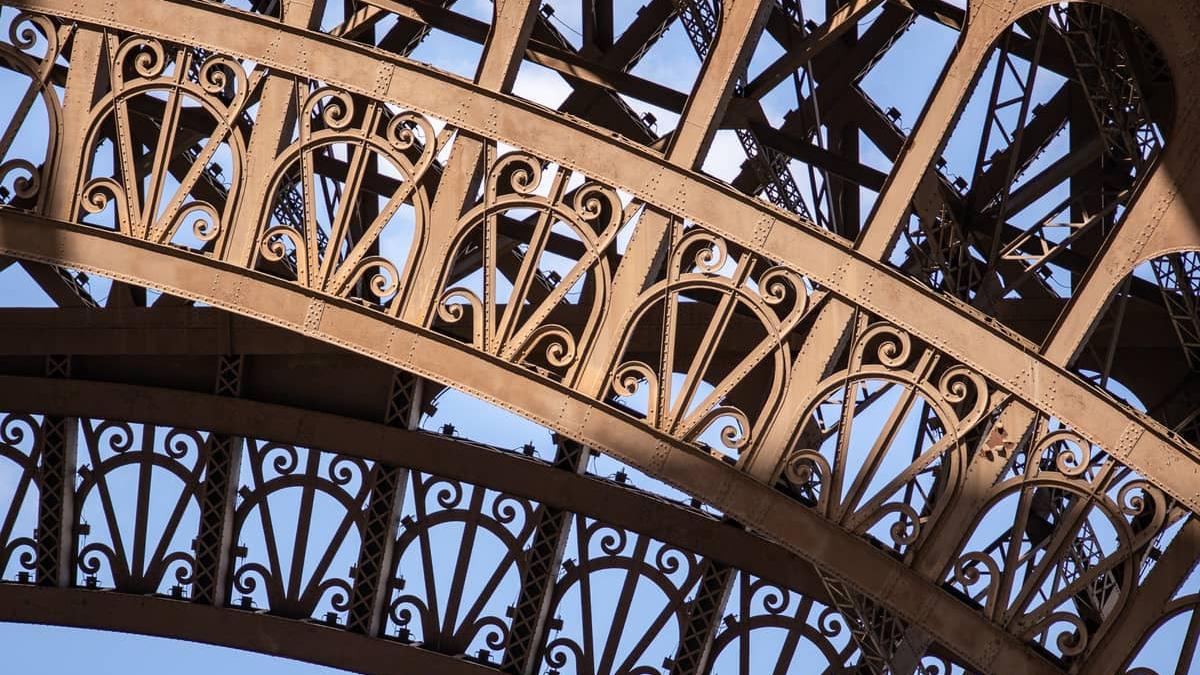
Eiffel tower facts, height & weight
An object of discord, desire and fascination, the Eiffel Tower never fails to impress. Enriched by a history full of new developments, here you can discover all of its key information.

History of the restaurants
For the Universal Exhibition of 1889, four majestic wooden pavilions designed by Stephen Sauvestre decked the platform on the first floor. Each restaurant could seat 500 people.
- Prices & Times
- Haut de page

IMAGES
VIDEO
COMMENTS
Download learning materials. +33 (0) 892 700 016 Contact us. For further information, please contact our dedicated team by phone or e-mail Monday to Friday from 9:30am to 6:00pm (from 9am in summer) Buy a ticket. Prices, tours, and meal deals for teachers and their students.
Le Pass Éducation est un outil au service du développement de l'éducation artistique et culturelle et plus largement du rapprochement de la culture et de l'École. Il permet un accès gratuit aux collections permanentes de plus de 160 musées et monuments nationaux aux personnels exerçant de manière effective en école, collège et lycée publics.
La tour Eiffel ne propose pas d'espace pour pique-niquer. En cas de petite faim, vous pourrez vouas restaurer aux buffets, bars et restaurants à tous les niveaux et pour tous les budgets ! Une quantité raisonnable de boisson et de nourriture est autorisée (laissé à l'appréciation des agents d'accueil) mais nous attirons votre ...
La tour Eiffel n'offre pas de gratuité aux porteurs de la carte enseignant. Pour vos visites d'ordre privée, nous vous invitons à acheter votre votre billet sur notre site de billetterie dédié aux particuliers où vous pourrez planifier une date et heure de visite afin d'éviter l'attente aux caisses.. Si vous souhaitez organiser une visite avec un groupe scolaire, nous vous ...
The Eiffel Tower (/ ˈ aɪ f əl / EYE-fəl; French: Tour Eiffel [tuʁ ɛfɛl] ⓘ) is a wrought-iron lattice tower on the Champ de Mars in Paris, France.It is named after the engineer Gustave Eiffel, whose company designed and built the tower from 1887 to 1889.. Locally nicknamed "La dame de fer" (French for "Iron Lady"), it was constructed as the centerpiece of the 1889 World's Fair, and to ...
The validity of the pass is calculated per hour, from the first visit, for 2, 4 or 6 consecutive days, i.e. 48 hours, 96 hours or 144 hours (example: a 2-day pass, activated on a Wednesday at 3 p.m. , is valid until the following Friday, 3 p.m.).
The Eiffel Tower's online box office allows you to purchase your ticket online for the 2nd floor or the Summit at the official rate. You can purchase individual e-tickets for up to 9 people. Tickets can also be purchased several weeks in advance. With the e-ticket system, experience no lines! You will directly receive your ticket by e-mail so ...
The PARIS MUSEUM PASS opens the doors to more than 50 museums and monuments in Paris and the Paris region.. The more you visit, the more you save. So, set off to discover one of the most fabulous heritages in the world! • 3 formulas: 2 days, 4 days, 6 days • Free access * to monuments and museum collections • Allows 1 entry to each site • Duration of use calculated per hour
The Eiffel Tower does not give holders of the Teachers Card free access. For your personal visits, we recommend that you buy your ticket on our ticketing website dedicated to individuals La Tour Eiffel : acheter un billet - Billeterie OFFICIELLE, where you can plan a date and time for your visit to avoid waiting at the cash desks.. If you would like to organise a visit with a school group, we ...
Visit the unique und famous landmark of the city of Paris with the Paris City Pass. Save 52,00 €. Skip the ticket booth and head directly up to the second floor of the famous Eiffel Tower on this guided tour. Learn about the history and the secrets behind the construction of this iconic French landmark and admire the spectacular views over Paris.
Take in the sights over the City of Love as you follow your guide to the second floor of the Eiffel Tower - a true icon of France. Enjoy an Eiffel Tower Guided Climb to the second floor with The Paris Pass® Experience the Eiffel Tower from within on a tour led by an expert guide up 674 stairs.
Eiffel Tower Opening Hours. It's always a good idea to double-check opening hours on the official website.From mid-June through the end of September the Eiffel Tower is usually open until midnight (meaning you can enter until midnight; it actually closes at 12:45am, or 11pm for the summit elevator); the rest of the year it closes at 11:45pm (last entrance to the summit 10:30pm, last entrance ...
Highlights. Experience the Eiffel Tower from within by climbing it alongside your expert guide. Get a bird's eye view of the Louvre, Notre Dame, Sacré-Cœur, Les Invalides, and more. Learn about the tower's engineering and the daredevil stunts that made history. Receive your ticket from your guide so you can head in together and save time.
Entry to top Paris attractions including a hop-on-hop-off bus tour plus a dedicated Paris Museum Pass. Save money on sightseeing with The Paris Pass®. Buy now; Attractions; How it works; Savings guarantee; Paris Museum Pass ... Eiffel Tower Guided Climb. €39.00 /person normally. Booking required. 2nd day free 'til May 31. Big Bus Hop-On Hop ...
The Eiffel Tower on social media. See more photos. Discover or visit the tower: buy a ticket (10.5 to 26.10 € maximum for adults and 2.6 to 13.10 € for children and young people), news and practical information.
The Eiffel Tower online ticket office provides the official prices. The adult price applies to adults 25 years and over. There are discount rates for young people (12-24 years old), children (4-11 years old) and for those with disabilities. Admission is free for children under 4 years old. The price of the ticket varies upon how you go up ...
An authentic experience. A breathtaking view of Paris. The discovery of the most prestigious monuments. Save time by planning your visit to the Eiffel Tower. €66.50. Select. A must for discovering or re-discovering Paris, this pass lets you tour Paris at your leisure and discover its most beautiful attractions. With the Paris Passlib Tour:
The Eiffel Tower is simply unmissable on a trip to Paris, and this tour is the very first guide-led climb up the stairs in the tower's history. ... Meeting point: please meet the team outside the Eiffel Tower and don't pass through any security checks. You will find them outside the South Security Entrance (Entrance #1) of the Eiffel Tower on ...
So that your visit goes without a hitch, download and read the Eiffel Tower visitor instructions. Download here. See our terms and conditions of sale. Download here. Home. Prices & Times. Opening times, ticket prices for individual and group visitors. Prices: 10.5 to 26.10 € maximum for adults, 2,6 to 13,10 € for children and young people.
St. Basil's Cathedral. Few sights are as iconic not only of Moscow and Red Square but indeed of Russia than St. Basil's Cathedral, whose colorful, onion-shaped domes are a symbol of the country around the world. Officially known as the Cathedral of Vasily the Blessed, this church has stood since 1561, which is quite miraculous when you consider ...
Every evening, the Eiffel Tower is adorned with its golden covering and sparkles for 5 minutes every hour on the hour, while its beacon shines over Paris. Home. The Tower. Save time, buy your tickets online. Conception, history, statistics, illuminations, artwork... discover every secret of the iconic Parisian monument.
The Design of the Eiffel Tower. The plan to build a tower 300 metres high was conceived as part of preparations for the World's Fair of 1889. Bolting the joint of two crossbowmen. (c): Collection Tour Eiffel. The wager was to " study the possibility of erecting an iron tower on the Champ-de-Mars with a square base, 125 metres across and 300 ...